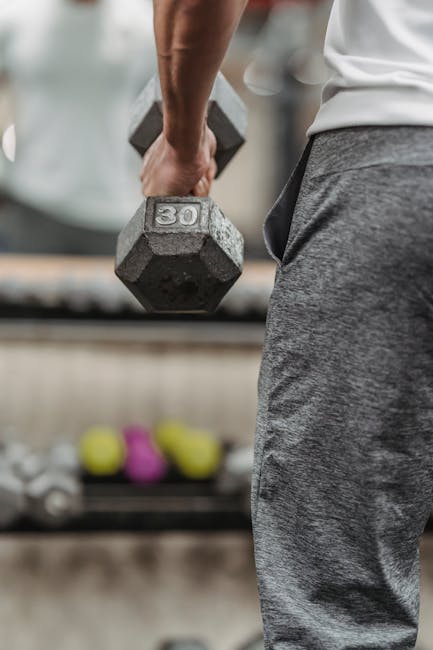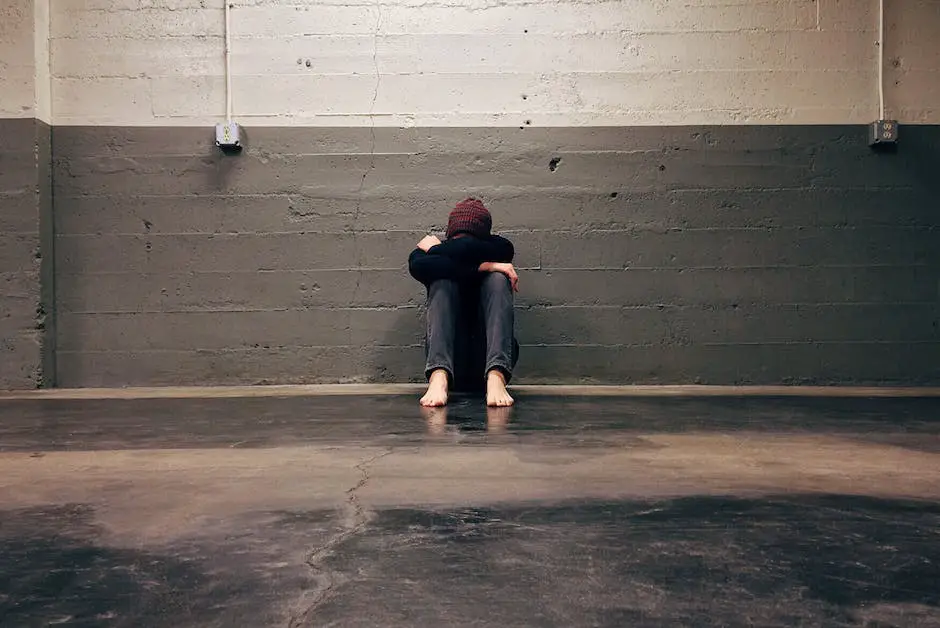Welcome to the world of weight lifting, where your inner elbow pain is as common as sighting the Hulk in the gym. If you’re a weightlifter, you’ve probably already experienced it. That nagging pain that comes after every bicep curl or overhead press, leaving you with nothing but a grimace and the sweet sound of your trainer’s laugh. But fret not, my fellow gym rats, because today we’re going to talk about how to manage that inner elbow pain so you can get back to lifting weights and flexing like a pro. So, grab your ice packs and let’s dive in!
Contents
- 1 1. Understanding Inner Elbow Pain in Weight Lifting
- 2 2. Identifying the Causes of Inner Elbow Pain in Weight Lifting
- 3 3. The Importance of Proper Warm-Up and Cool-Down Techniques
- 4 4. Developing a Rehabilitation Plan for Inner Elbow Pain
- 5 5. Preventing Inner Elbow Pain in Weight Lifting Through Technique and Training Adjustments
1. Understanding Inner Elbow Pain in Weight Lifting
So, you just hit a new personal best on your bench press. Congratulations! However, now you feel a pain in your inner elbow area. Don’t worry, my friend, you’re not alone. Inner elbow pain in weight lifting is a common issue, also known as the “golfer’s elbow” or the fancier term “medial epicondylitis”.
This pesky pain occurs due to the overuse and repetitive stress on tendons in your forearm, which attach to the inner elbow. It can be caused by improper lifting techniques, excessive weight, or even just a lack of proper warm-up and stretching. But don’t worry, with some proper care and attention, you can alleviate the pain and get back to your gains!
- Don’t ignore the pain, take a break: As much as you want to push through the pain and continue your lifting routine, it’s important to give your elbow a break. Continuing to lift with pain can only worsen the injury. Take a few days off or focus on exercises that don’t aggravate the pain, such as lower body workouts or cardio.
- Rest, ice, and compression: Just like any other injury, the RICE method is your go-to for recovery. Rest your elbow, apply ice for 20 minutes at a time, multiple times a day, and use a compression bandage to reduce swelling.
- Stretch it out: Once the pain subsides, it’s important to stretch and strengthen the muscles surrounding the injury. Focus on wrist curls, grip strengtheners, and eccentric exercises to heal and improve your elbow’s strength.
So there you have it, my friend – a small bump on the road to your gains. By giving your elbow the proper attention and recovery time, you can come back stronger and better than ever before. Happy lifting!

2. Identifying the Causes of Inner Elbow Pain in Weight Lifting
Do you suffer from inner elbow pain after lifting? Well, technically speaking, that’s your medial epicondyle screaming in pain, but I digress. Let’s get to the root of the problem here. What’s causing this agony and how can we avoid it?
- Grip – One of the reasons for inner elbow pain can be a poor grip. If your grip is too narrow or your fingers are hyperextended, you’re putting a lot of strain on your elbow. Try to maintain a neutral wrist position and use a grip that’s neither too wide nor too narrow. Also, invest in weight lifting gloves to help reduce the pressure on your hands and wrists.
- Overuse – Overworking your muscles can lead to inflammation and pain in your elbows. If you’re doing too many reps or not taking enough rest days, your body won’t have time to recover. It’s important to pace yourself and not push too hard. Remember, lifting is a marathon, not a sprint!
- Form – Incorrect form is a surefire way to cause inner elbow pain. Elbows should be tucked in and close to your body during movements like the bench press or curls. Also, avoid locking your elbows as this can lead to unnecessary stress. Don’t be afraid to ask a personal trainer for help with your technique.
So, there you have it. You can avoid inner elbow pain in weight lifting by improving your grip, avoiding overuse, and maintaining proper form. But, if pain persists, take a break from lifting and consult your doctor. After all, no pain, no gain…unless it’s constant unbearable pain, then you should probably stop.
3. The Importance of Proper Warm-Up and Cool-Down Techniques
Let’s face it, no one likes warming up or cooling down before or after a workout. We’d rather dive right into the main event and skip all the boring stuff. However, proper warm-up and cool-down techniques are crucial for preventing injuries and allowing your body to perform at its best.
Think about it – you wouldn’t start a car without letting it warm up first, right? The same goes for your body. It needs time to transition from a state of rest to a state of activity. A good warm-up should include some light cardio to get your heart rate up, dynamic stretching to loosen up your muscles, and maybe a few bodyweight exercises to activate your muscles.
Now, let’s talk about cooling down. This might be the most neglected part of a workout because, let’s be honest, we just want to collapse on the couch and Netflix and chill. But taking a few minutes to cool down properly can make all the difference in how you feel the next day. Cooling down helps bring your heart rate and breathing back to normal, reduces muscle soreness, and increases flexibility. So, don’t skip it, or you might regret it later.
- Proper warm-up and cool-down techniques are crucial for preventing injuries and allowing your body to perform at its best.
- A good warm-up should include some light cardio to get your heart rate up, dynamic stretching to loosen up your muscles, and maybe a few bodyweight exercises to activate your muscles.
- Cooling down helps bring your heart rate and breathing back to normal, reduces muscle soreness, and increases flexibility.
4. Developing a Rehabilitation Plan for Inner Elbow Pain
So, you’ve got inner elbow pain. It hurts every time you reach for a glass, move your arm, or even look at your elbow. But chin up! There’s still hope. With a rehabilitation plan in place, you can not only soothe your inner elbow pain but also get back to your daily routine without any more painful interruptions.
Step 1: Take a break. Yes, you heard it right. Rest. Recover. Relax. Nobody will judge you if you skip the gym or a tennis match for a few days (or weeks) until you feel better. Your inner elbow pain needs some quiet time to heal. So, kick back, watch some Netflix, try a new hobby, and let your arm rest for a while.
Step 2: Stretch it out. Okay, now that you’ve had your share of idle time, it’s time to get moving (carefully). Simple stretches like wrist extensor stretches, triceps stretches, and forearm flexor stretches can loosen up your muscles and relieve pain. Just remember to do them gently and slowly; it’s not a competition.
- Wrist extensor stretch: Hold your arm in front of you with your palm facing down. Use your other hand to gently push your hand towards the floor until you feel a stretch in your forearm. Hold for 15-30 seconds and repeat on the other arm.
- Triceps stretch: Raise one arm above your head and bend your elbow so that your hand rests behind your neck. Use your other hand to gently push your elbow further back until you feel a stretch in your triceps. Hold for 15-30 seconds and repeat on the other arm.
- Forearm flexor stretch: Hold your arm out in front of you with your palm facing up. Use your other hand to gently push your fingers back until you feel a stretch in your forearm. Hold for 15-30 seconds and repeat on the other arm.
Step 3: Get a professional opinion. If your inner elbow pain persists or worsens, it’s time to seek expert help. A physical therapist or a doctor can examine your elbow, assess the degree of damage, and recommend the best course of action. They may suggest exercises, braces, or even surgery depending on the severity of your injury. Don’t delay any further; an expert opinion can put an end to your inner elbow pain for good.
5. Preventing Inner Elbow Pain in Weight Lifting Through Technique and Training Adjustments
We all know how it feels when we’re lifting weights and suddenly the inner elbow pain hits us like a ton of bricks. It’s like we’re being stabbed with a rusty fork! But fear not, my friends, because there are some simple technique and training adjustments that can prevent this pain from ever happening again.
Firstly, make sure you’re not lifting the weights too close to your body. Keep your elbows slightly away from your sides, forming an almost 90-degree angle. This will help reduce the stress on your inner elbow tendons, easing the pain. Plus, you won’t look like a Tyrannosaurus rex trying to do bicep curls.
Secondly, try switching up your workout routine. If you’re constantly doing the same exercises, you’re more likely to experience inner elbow pain. Incorporate different exercises that hit the same muscle groups but in different ways. This way, you’re not overusing the same tendon again and again. Mix it up, people!
Lastly, don’t forget to stretch before and after your workout. Stretching helps warm up your muscles and increases your range of motion, making it less likely for you to strain your inner elbow tendons. Plus, you’ll look super cool while doing it, like some kind of yoga master flexing their guns on the gym floor.
In conclusion, with these simple adjustments to your technique and training, you can say goodbye to inner elbow pain forever. Lift like a boss and feel the burn without the rusty fork stabbing sensation. You got this!
Don’t Let Elbow Pain Weigh You Down
So there you have it, folks – these tips should be enough to help you take care of your inner elbow pain and prevent it from becoming worse. Remember, lifting weights is about feeling strong, not feeling pain. By following these simple steps, you’ll be on your way to crushing your goals in no time. And if you do feel pain, just remember to take a break to let your elbows heal and come back stronger. Happy lifting!








Leave A Comment